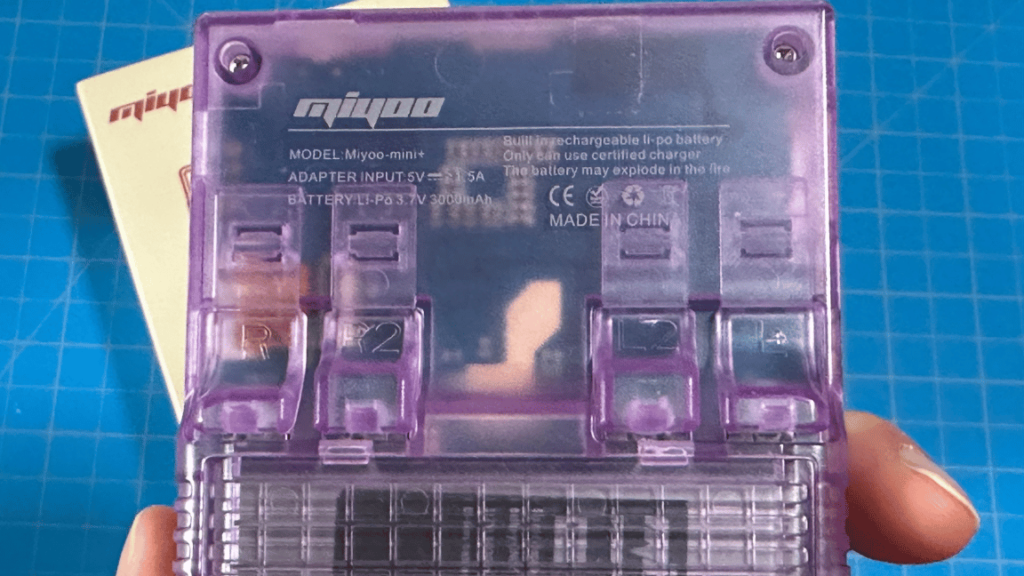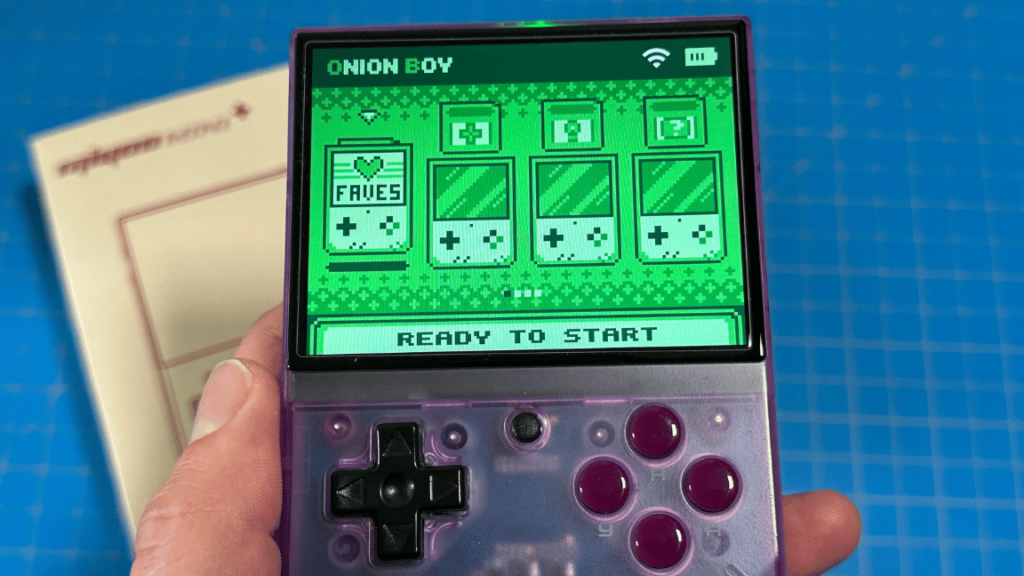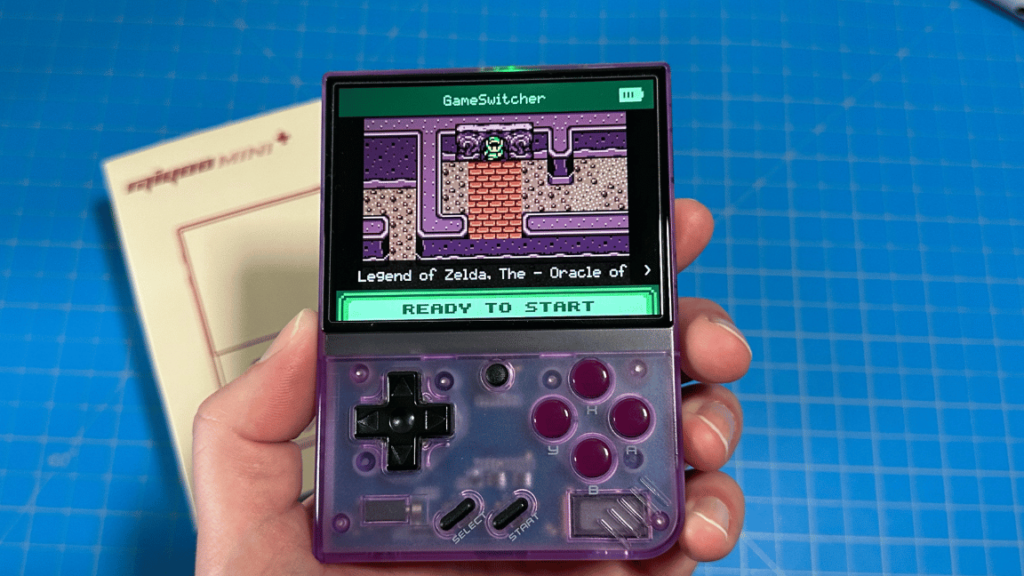Let me tell you about why I got into the retro handheld scene.
Before this year, the thought of playing the games I grew up with didn’t occur to me. This is strange to think about because now retro video games are a large part of my life.
I was playing video games, don’t get me wrong, but I was only really playing modern games.
I think as gamers we tend to focus on the next big thing. Often those gems from the past get neglected.
Modern games are fun, I’m not about to say they aren’t, you can find me playing modern shooters, PS5 exclusives, and plenty of Nintendo Switch games.
But I felt something was missing. It’s hard to pinpoint the exact feeling but I just didn’t get the same satisfaction from modern games as I used to get from playing the classics.
Maybe it’s nostalgia, but my memories of growing up playing games like Super Mario, Ocarina of Time, Halo, and Pokemon Emerald gave me that feeling of adventure and excitement that kept me occupied for countless hours.
This is where the retro handheld comes into play. I wanted to relive those glory days of retro gaming and I also wanted to experience the games that I didn’t get to play during that time.
Specifically in this review, I’m going to be talking about the Miyoo Mini Plus. My goal in purchasing the Miyoo Mini Plus was to have a reliable handheld that could play what I wanted to play and give me that nostalgic feel.
After 100 hours of testing out the Miyoo Mini Plus, I can confidently say it can do just that.
But let’s get into the nitty-gritty. What did I learn about this device after playing it for over 100 hours? A lot. Keep reading to learn more!
Specs
Here are the Miyoo Mini Specs:
- ARM Cortex A7 Dual-Core Processor @1.2GHz
- 3.5” IPS Display @ 640×480 Resolution
- 128MB RAM
- 64GB Storage
- 3000 mAh rechargeable battery
- USB-C Charging
- Wifi
The chip that comes with this device is nothing too fancy, but honestly, for the price point, you shouldn’t expect much. It can handle all your retro games just fine up to PS1 (and DS now) but won’t be able to play more demanding consoles like N64, GameCube, and beyond.
Even if you could play the more demanding consoles, you wouldn’t want to because of the lack of analog sticks. More on the gameplay below.
The screen resolution looks great on this device featuring small bezels and a nice 4:3 aspect ratio which is great for retro games.

The battery provides your average gameplay time of around 4 to 6 hours depending on what you are playing.
One big upgrade from the original Miyoo mini is the Wifi. If you like to play with retro achievements turned on, like I do, you’ll be happy about that. Plus having the internal wifi makes updating the console much easier.
Build Quality
Let’s talk about the physical build of the Miyoo Mini Plus. This is where it truly shines. I find that the Miyoo Mini Plus has a surprisingly premium feel for the price point.
The 3.5” IPS display looks great on this device. I especially like how they maximized the screen size real estate. The screen extends from edge to edge providing you a nice size screen for a console that is still relatively small.

Plus they added that slab of glass over the screen which is nice.
The A, B, X, and Y buttons have a glossy finish which is not my favorite but still looks nice. I prefer a more matte or rubbery kind of feel to face buttons but this is completely a personal preference. A glossy finish tends to be the norm.
The D-pad is the only thing I’m not a huge fan of which is kind of a hot take because it seems that other reviewers love the D-pad.
In my opinion, the D-pad protrudes too far out of the system and I find that changing directions on this D-pad is not very fluid. This is very evident in games like Pokemon that only have movement in 4 directions. Quick changes from one direction to another are not as seamless as other consoles I own.

Also on the front, you have the game switcher button as well as the hotkey button for emulator controls. I love the game switcher option.
On the back, we have our stacked shoulder buttons. Great quality buttons and are not clicky. The R1 and L1 shoulder buttons are not that comfortable to use if you have bigger hands. You may consider switching the button mapping for the R1/L1 with the R2/L2 because these are way more comfortable to press.

On top, there is a power button and on the side, there are up and down volume buttons. I much prefer having buttons for volume instead of a slider.
On the bottom, there is a headphone jack, a USB C adapter for charging, and a micro SD slot that you will use to install Onion OS and your ROMs.
I’m a stickler for quality of build when it comes to my handhelds. Based on my experience with retro handhelds, the plastic for the Miyoo Mini feels like a durable high-quality material. The texture of this particular plastic feels grippy which is great because I’m less likely to drop it!
When I handle my retroid pocket 3+, I’m nervous that if I drop it I will break the console. With the Miyoo Mini Plus, I don’t have that concern at all. Especially with the screen protector it came with.
Now about the size. Something that people like about the Miyoo Mini original is the charming small size. The size itself adds appeal much like a novelty thing.
I was nervous that the Miyoo Mini Plus would be too big putting it out of that Miyoo Mini charming appeal category. But honestly, I think the size is perfect. I don’t think I would enjoy it as much if it was smaller. Rest assured, the Miyoo Mini Plus is still very portable and pocketable.
Set-Up Process
I installed Onion OS on my Miyoo Mini Plus.
Onion OS is the gold standard for the Miyoo Mini. When your Miyoo Mini Plus arrives, it may look like Onion OS is installed already but this is just a theme that’s installed over the stock OS.
You’ll still need to install Onion OS. But don’t worry it’s pretty simple. I followed this guide and had no issues.
FYI Mac Users:
When installing Onion OS, you’ll need a Micro SD card that is formatted to Fat32, not exFat. Mac being the kind of computer that likes to hold your hand will not format SD cards larger than 32GB to Fat32 because Exfat is more advanced for the speed of writing/reading files and not many devices require a Fat32 format.
Miyoo mini, however, does require a Fat32 format. A PC will let you format the SD card however you want. Mac will only let you format to Fat32 for 32gb cards or smaller.
However, if you purchased a larger card, like I did, there is a workaround. I scoured the internet for a solution since I don’t own a PC at the moment and I found a Reddit post that had the answer I was looking for.
All you do is download the Raspberry Pi imaging software and you can format those larger micro SD cards.
Operating System
Onion OS has my favorite UI as of today.
One thing that I find awesome is the fact that you can change the theme to a lot of different options. I love how retro my theme in particular feels but there are a bunch more. Even tech dweeb has his own theme.
Second, I’m a huge fan of the simplicity of the UI. One of the main complaints I had about the Retroid Pocket 3+ was how it reminded me of playing on a cellphone with a gamepad. There were a lot of settings and different emulators you needed to figure out how to download to get the most out of the system.
The Miyoo Mini Plus, with Onion OS installed, has everything set up for you right off the bat.
And again, simplicity. When you boot up your Miyoo Mini Plus the main menu has 4 different options. I can’t stress enough how great this OS is.

Updating Onion OS is done through the device itself. All you need to do is activate the OTA updater app and simply click on update.
One issue I had with Onion OS, was with the Wifi.
For a while, every time I booted up the Miyoo Mini Plus, it wouldn’t connect to the wifi. Sometimes I would wait about 30 seconds and then it would connect. Sometimes I waited up to 5 minutes and it didn’t connect until I restarted the console.
I googled the problem. As you can imagine, it was hard to find an answer to this niche question. In the depths of Reddit, I found a similar question and someone answered by saying that there are issues when connecting to the wifi when you have a Wifi password with special characters in it.
My Wifi password had special characters in it. I ended up changing the password on my router and now I have no issues connecting to wifi.
Performance and Gameplay
Before writing this review, I played on the Miyoo Mini Plus for just over 100 hours.
This means I’ve beaten several games and have played on a variety of emulators this console supports. Through these gameplay sessions, I learned more about this device, its quirks, and how it controls.

The first few games I tested were Gameboy Color games. No surprise, they played completely fine. I would also like to add that Gameboy games look great on this device. Its form factor and screen size complement these games.
One thing I should point out. While playing the Legend of Zelda Oracle of Seasons, the A button on my Miyoo Mini just started sticking ever so slightly. This has not affected gameplay, but it’s just a little annoying. I generally keep my hands clean when I play on this device so I don’t think it has anything to do with oil or grime getting trapped in there.
My Gameboy Advance experience on the Miyoo Mini Plus was also very enjoyable. No performance issues whatsoever. Out of all the consoles I played, I think Gameboy Advance looks the best on this device. Mainly due to the combination of a similar aspect ratio plus the overall construction of the device.
If you don’t switch the R1/L1 and R2/L2 shoulder buttons, you’ll find pretty quickly how much you need to claw your finger while playing GBA games that require the shoulder buttons.
SNES looks great on the Miyoo Mini Plus as well which makes sense due to the fact their aspect ratios are almost identical.
The Miyoo Mini Plus isn’t capable of handling most of the 3D consoles. It does, however, handle PS1 very well. This is not too surprising because PS1 is relatively easy to emulate.
One thing that I appreciated is that this console didn’t have any freezing issues. With previous handhelds, I had my fair share of game crashes and freezes that sometimes ended up with data loss.
It’s very annoying to lose your game saves after making hours of progress.
Other Features Of The Miyoo Mini Plus
There are a couple of other features I’d like to talk about.
First off, the Game switcher.
This is a really handy tool. All you do is press the middle button which will make a save state for your game and enter you into the game switcher menu. In this menu, you can quickly switch to another game.

Next the sleep mode function. I’m a huge fan of how the Miyoo Mini Plus with Onion OS uses the sleep function.
It creates a save state before entering sleep mode. This is great because with other retro handhelds I owned, sometimes I would put the device into sleep mode and then when re-entering the game it would sometimes crash causing me to lose data.
With the sleep function the way it is combined with the game switcher, you end up with a device that is simple to turn off and on, switching between games as needed. This makes the Miyoo Mini Plus a very plug-and-play device.
Nostalgic Factor
One of the driving factors for playing older video games is nostalgia. That’s why I often purchase retro handhelds based on how they give me that nostalgic feel.
The Miyoo Mini Plus screams nostalgia.
It has the shape of a GameBoy. The color I chose, transparent purple, is very reminiscent of the late 90s when everyone wanted to be able to see inside of their systems.

If this color is not for you, don’t worry they have other nostalgic colors to choose from.
OnionOS’s UI lets you also pick through some great themes with retro vibes.
Who Is This Console Great For?
We all have our wants and desires when it comes to retro handhelds. So, who is this console perfect for?
Honestly, this device is not a powerhouse. Although you can play some PS1 and DS on it, that’s about as much as it can handle. If you want to play more demanding consoles like PS2 and GameCube, you’ll have to look into a more powerful device like the Retroid Pocket 3+.
But if you are looking for the true retro stuff, like NES, SNES, Gameboy, Sega Genesis, and Gameboy Advance, you will love the Miyoo Mini Plus. For those consoles, it’s all that you need plus it’s honestly pretty cheap.
You’ll have to put up with a couple of minor things such as the R1 and L1 buttons requiring you to claw your fingers a bit and the d-pad being a little bit more rigid in directional changes.
This device is my retro handheld companion. When I’m sitting around in a waiting room or just chilling on the couch looking for something to do, this device is perfect for booting up a quick game to play.
Not to mention its perfectly pocketable size and durable construction making it easy to take with me everywhere.
Finally, what makes the Miyoo Mini Plus shine is Onion OS. Of all the retro handhelds I’ve played so far, the Miyoo Mini’s OS is the clear winner. I kid you not, every time I boot this system up, that little retro-inspired menu just warms my heart.
For those of you who are looking to play non-3d retro games for an affordable price, I highly recommend the Miyoo Mini Plus.
